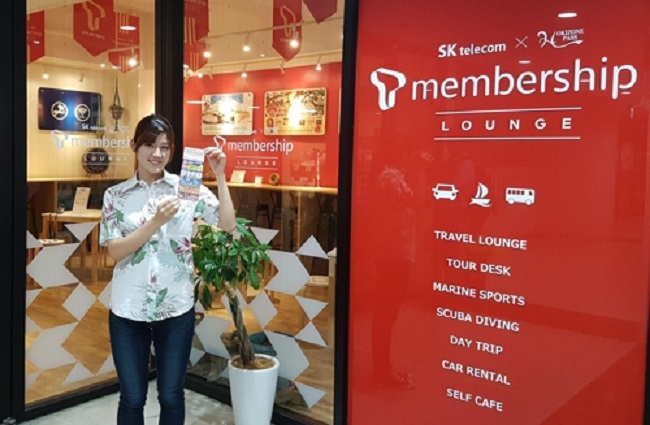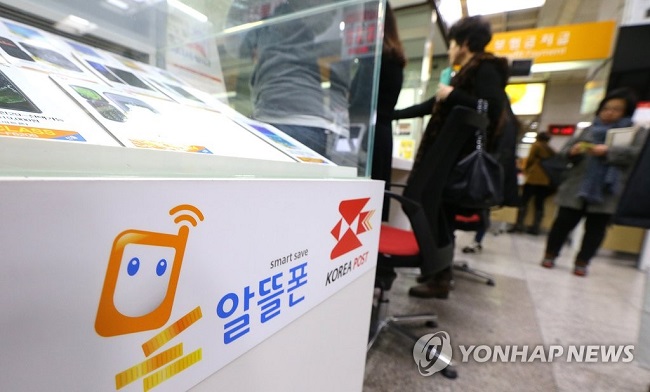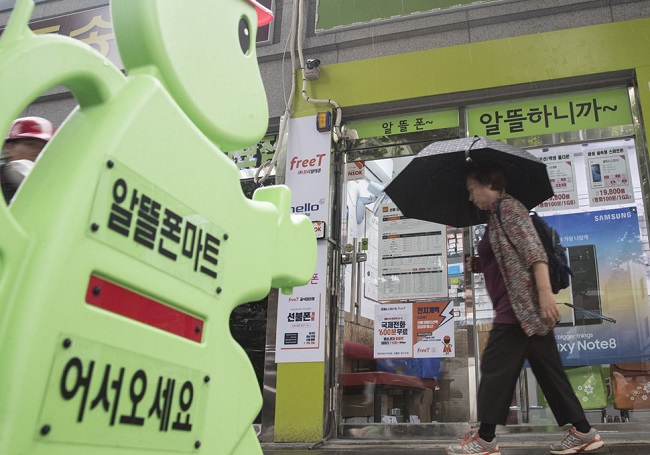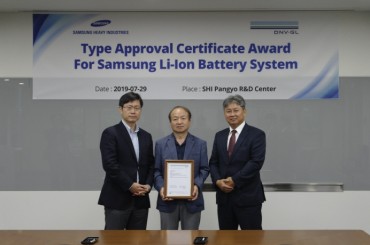
With the three major telecom operators SK Telecom, KT and LG Uplus closing the gap in affordable pricing for phones and rate plans since last September, South Korea’s mobile virtual network operators (MVNO) are increasingly losing customers while failing to attract new users. (Image: Yonhap)
SEOUL, Jan. 18 (Korea Bizwire) — With the three major telecom operators SK Telecom, KT and LG Uplus closing the gap in affordable pricing for phones and rate plans since last September, South Korea’s mobile virtual network operators (MVNO) are increasingly losing customers while simultaneously failing to attract new users.
Unlike the triumvirate of traditional telecom providers, MVNOs, referred to as “thrift phone operators” locally, rent rather than own networks, which traditionally has given them the ability to offer far more modestly priced deals. First introduced in 2011, MVNOs quickly amassed a customer base on the strength of their 30 to 40 percent cheaper prices compared to regular mobile carriers.
The tide is changing just as quickly now, for the worse. According to the Korea Telecommunications Operators Association, 638,435 MVNO users departed for one of SK Telecom, KT and LG Uplus last year, 21 percent more than the 527,794 who preceded them in 2016.
The number of Koreans making the opposite journey from the Big 3 to MVNO, meanwhile, shrunk by nearly the same percentage, dropping from 902,371 in 2016 to 708,567 in 2017 (a 21.5 percent reduction).
All told, the numerical difference between those who came and those who left was a positive 70,132, less than one-fifth the 374,577 in 2016.

According to the Korea Telecommunications Operators Association, 638,435 MVNO users departed for one of SK Telecom, KT and LG Uplus last year, 21 percent more than the 527,794 who preceded them in 2016. (Image: Yonhap)
Trouble for MVNOs has been brewing for the past three years, as the Big 3 have ramped up marketing efforts and released a wider range of low-cost phones to poach customers.
The tally of those who made the switch to an MVNO reached a high of 1.05 million in 2014, and has dropped steadily since then, coming in at 870,000 in 2015 and 900,000 in 2016.
Over the same period, growing numbers of customers have migrated away from MVNOs. Starting with 180,000 in 2014, customer churn has steadily increased, going from 390,000 in 2015 to 530,000 in 2016.

This development has been attributed to the decision made on September 15 to raise the Big 3′s mobile plan discounts from the previous 20 percent to 25 percent, which effectively diminished the principal MVNO calling card of affordability. (Image: Yonhap)
Looking at the figures from the past few years, the forecast for this year is that departures will outnumber arrivals.
From September to the end of the year, the MVNO user base dropped by 8,495 customers. This development has been attributed to the decision made on September 15 to raise the Big 3′s mobile plan discounts from the previous 20 percent to 25 percent, which effectively diminished the principal MVNO calling card of affordability.
Though the government has responded to the MVNO industry’s woes by increasing the number of post offices where “thrifty phone” customers can be served, it is not expected to be enough to reverse current trends.
S.B.W. (sbw266@koreabizwire.com)






